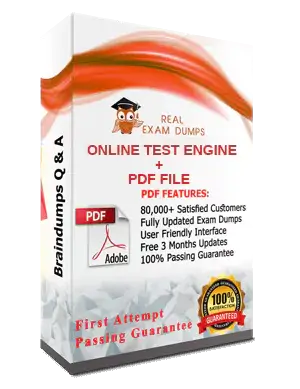Professional-Cloud-Security-Engineer Exam Dumps

Google Professional-Cloud-Security-Engineer Dumps - Google Cloud Certified - Professional Cloud Security Engineer PDF Sample Questions

Google Professional-Cloud-Security-Engineer This Week Result
They can't be wrong
Score in Real Exam at Testing Centre
Questions came word by word from this dumps
Best Google Professional-Cloud-Security-Engineer Dumps - pass your exam In First Attempt
Our Professional-Cloud-Security-Engineer dumps are better than all other cheap Professional-Cloud-Security-Engineer study material.
Only best way to pass your Google Professional-Cloud-Security-Engineer is that if you will get reliable exam study materials. We ensure you that realexamdumps is one of the most authentic website for Google Google Cloud Certified exam question answers. Pass your Professional-Cloud-Security-Engineer Google Cloud Certified - Professional Cloud Security Engineer with full confidence. You can get free Google Cloud Certified - Professional Cloud Security Engineer demo from realexamdumps. We ensure 100% your success in Professional-Cloud-Security-Engineer Exam with the help of Google Dumps.You will feel proud to become a part of realexamdumps family.
Our success rate from past 5 year very impressive. Our customers are able to build their carrier in IT field.

 Search
Search
45000+ Exams
 Buy
Buy
Desire Exam
 Download
Download
Exam
Related Exam
Realexamdumps Providing most updated Google Cloud Certified Question Answers. Here are a few exams:
Google Professional-Cloud-Security-Engineer Frequently Asked Questions
Sample Questions
Realexamdumps Providing most updated Google Cloud Certified Question Answers. Here are a few sample questions:
Google Professional-Cloud-Security-Engineer Sample Question 1
A customer wants to run a batch processing system on VMs and store the output files in a Cloud Storage bucket. The networking and security teams have decided that no VMs may reach the public internet. How should this be accomplished?
Options:
Answer: D
Google Professional-Cloud-Security-Engineer Sample Question 2
Your team sets up a Shared VPC Network where project co-vpc-prod is the host project. Your team has configured the firewall rules, subnets, and VPN gateway on the host project. They need to enable Engineering Group A to attach a Compute Engine instance to only the 10.1.1.0/24 subnet. What should your team grant to Engineering Group A to meet this requirement?
Options:
Answer: B Explanation: Explanation: https://cloud.google.com/vpc/docs/sh ared-vpc#svc_proj_admint
Google Professional-Cloud-Security-Engineer Sample Question 3
Last week, a company deployed a new App Engine application that writes logs to BigQuery. No other workloads are running in the project. You need to validate that all data written to BigQuery was done using the App Engine Default Service Account. What should you do?
Options:
Answer: D
Google Professional-Cloud-Security-Engineer Sample Question 4
In order to meet PCI DSS requirements, a customer wants to ensure that all outbound traffic is authorized. Which two cloud offerings meet this requirement without additional compensating controls? (Choose two.)
Options:
Answer: C, D Explanation: Explanation: App Engine ingress firewall rules are available, but egress rules are not currently available. Per requirements 1.2.1 and 1.3.4, you must ensure that all outbound traffic is authorized. SAQ A-EP and SAQ Dâtype merchants must provide compensating controls or use a different Google Cloud product. Compute Engine and GKE are the preferred alternatives. https://cloud.google.com/solutions/pci-dss-compliance-in-gcq
Google Professional-Cloud-Security-Engineer Sample Question 5
You want to prevent users from accidentally deleting a Shared VPC host project. Which organization-level policy constraint should you enable?
Options:
Answer: B Explanation: Reference: [Reference: https://cloud.google.com/vpc/docs/provisioning-shared-vpc, , ]
Google Professional-Cloud-Security-Engineer Sample Question 6
Which type of load balancer should you use to maintain client IP by default while using the standard network tier?
Options:
Answer: C Explanation: Reference: [Reference: https://registry.terraform.io/providers/hashicorp/google/latest/docs/resources/compute_forwarding_rule, , ]
Google Professional-Cloud-Security-Engineer Sample Question 7
A company allows every employee to use Google Cloud Platform. Each department has a Google Group, with all department members as group members. If a department member creates a new project, all members of that department should automatically have read-only access to all new project resources. Members of any other department should not have access to the project. You need to configure this behavior. What should you do to meet these requirements?
Options:
Answer: B
Google Professional-Cloud-Security-Engineer Sample Question 8
Your organization recently deployed a new application on Google Kubernetes Engine. You need to deploy a solution to protect the application. The solution has the following requirements: Scans must run at least once per week Must be able to detect cross-site scripting vulnerabilities Must be able to authenticate using Google accounts Which solution should you use?
Options:
Answer: B Explanation: Reference: [Reference: https://cloud.google.com/security-command-center/docs/concepts-web-security-scanner-overview, , ]
Google Professional-Cloud-Security-Engineer Sample Question 9
You are in charge of migrating a legacy application from your company datacenters to GCP before the current maintenance contract expires. You do not know what ports the application is using and no documentation is available for you to check. You want to complete the migration without putting your environment at risk. What should you do?
Options:
Answer: B
Google Professional-Cloud-Security-Engineer Sample Question 10
Your team needs to make sure that a Compute Engine instance does not have access to the internet or to any Google APIs or services. Which two settings must remain disabled to meet these requirements? (Choose two.)
Options:
Answer: A, C Explanation: Reference: [Reference: https://cloud.google.com/vpc/docs/configure-private-google-access, ]
Google Professional-Cloud-Security-Engineer Sample Question 11
A customer wants to deploy a large number of 3-tier web applications on Compute Engine. How should the customer ensure authenticated network separation between the different tiers of the application?
Options:
Answer: D
Google Professional-Cloud-Security-Engineer Sample Question 12
You are part of a security team investigating a compromised service account key. You need to audit which new resources were created by the service account. What should you do?
Options:
Answer: B Explanation: Reference: [Reference: https://cloud.google.com/iam/docs/audit-logging/examples-service-accounts, ]
Google Professional-Cloud-Security-Engineer Sample Question 13
A customer needs to prevent attackers from hijacking their domain/IP and redirecting users to a malicious site through a man-in-the-middle attack. Which solution should this customer use?
Options:
Answer: C Explanation: Reference: [Reference: https://cloud.google.com/blog/products/gcp/dnssec-now-available-in-cloud-dns, ]
Google Professional-Cloud-Security-Engineer Sample Question 14
A company is backing up application logs to a Cloud Storage bucket shared with both analysts and the administrator. Analysts should only have access to logs that do not contain any personally identifiable information (PII). Log files containing PII should be stored in another bucket that is only accessible by the administrator. What should you do?
Options:
Answer: D

